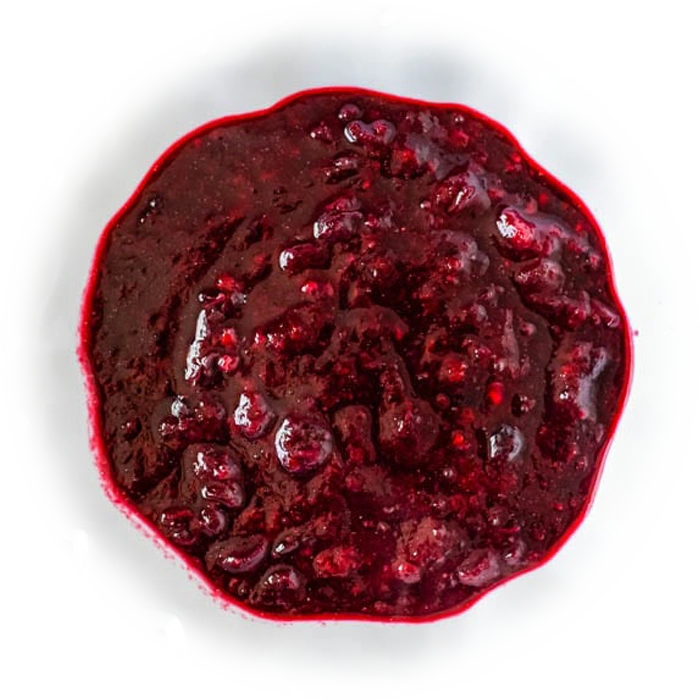
Nutritional properties of Wojapi sauce
Energy :
None Kcal / 100g
Category : Spices & Sauces
Group : Sauces
Composition And Nutritional Value :Wojapi sauce is a traditional Native American sauce, often made with berries, sugar, and cornstarch or flour to thicken it. The most common berry used in wojapi is the chokecherry, but other berries like blueberries, raspberries, or elderberries can also be used depending on the region and available ingredients. The berries are typically cooked down with water and sugar to form a thick, sweet sauce. The addition of cornstarch or flour helps create a smooth, pudding-like consistency. Nutritionally, wojapi is a good source of vitamin C from the berries, and it provides some fiber. However, it can be high in sugars and calories due to the added sweeteners.
Health Benefits :
Rich in Antioxidants: The berries used in wojapi, such as chokecherries, are high in antioxidants like anthocyanins, which can help fight free radicals and reduce inflammation in the body.
Vitamin C: The berries also provide a significant amount of vitamin C, which supports immune function and collagen production, helping to maintain healthy skin, joints, and bones.
Fiber: The natural fruit in wojapi contains fiber, which can aid in digestion and contribute to a feeling of fullness, making it helpful for maintaining healthy digestion and regulating blood sugar levels.
Natural Sweetener: While wojapi contains added sugar, using natural fruit to provide sweetness may offer a slightly healthier alternative to refined sugars and artificial sweeteners. However, the sugar content should still be considered if consumed in large quantities.
Culinary Uses : Wojapi is a versatile sauce with a rich, berry flavor that can be used in various ways. It is most commonly served as a dessert topping, especially over fried bread, pancakes, or biscuits. It can also be drizzled over ice cream or cakes for added sweetness and flavor. In addition to sweet dishes, wojapi pairs well with savory meats such as roast pork or game meats like deer or bison, adding a tangy contrast to the richness of the meat. The sauce is also sometimes used as a filling for pastries or pies.
Types :
Traditional Wojapi: Made primarily with chokecherries and sugar, this is the classic version of wojapi with a deep, rich berry flavor.
Mixed Berry Wojapi: A variation that uses a combination of wild berries, such as blueberries, raspberries, or blackberries, to create a more complex flavor profile.
Vegan Wojapi: A plant-based version that avoids using animal-derived products like butter or dairy. Some recipes use cornstarch or arrowroot powder to thicken the sauce.
Sugar-Free Wojapi: For those looking to reduce sugar intake, sugar substitutes like honey, maple syrup, or stevia can be used to sweeten the sauce without refined sugar.
Shopping And Storage Tips :
Selecting Berries: If making wojapi from scratch, choose fresh or frozen berries that are in season for the best flavor. Chokecherries are the traditional berry of choice, but a variety of berries can be substituted to suit your taste.
Storage: Store homemade wojapi in an airtight container in the refrigerator for up to 1 week. It may thicken over time, so you can add a little water or juice to restore the desired consistency when reheating.
Freezing: Wojapi can be frozen for up to 3 months. To freeze, place the sauce in freezer-safe containers, leaving some room for expansion. Thaw in the refrigerator before reheating.
Preserving Wojapi: For long-term storage, you can can wojapi in jars using a water bath canning method to preserve it for months or even years. This helps maintain its flavor and texture.

